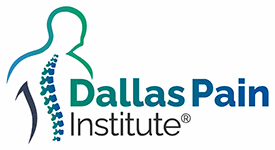Call for an appointment today! (903) 892-1999
Lumbar Epidural Steroid Injection
An epidural steroid injection is a medical procedure that injects anti-inflammatory medicine into the epidural space of the spine. Its goal is to reduce inflammation of the nerve roots, potentially alleviating pain in the back or legs. The injection can aid in healing the injury by minimizing inflammation, and it may offer permanent relief or several months of pain reduction as the underlying cause heals.
Here’s what you should know about the procedure:
General Pre-injection Instructions: If you are scheduled for this procedure at one of our pain management clinics in Dallas, TX, please adhere to the following instructions:
- Notify our staff if you have any allergies, particularly to iodine.
- Do not eat on the morning of the procedure if you’ll be receiving sedation.
- Insulin-dependent diabetics may need to adjust their morning insulin dose due to fasting.
- Continue taking routine medications like those for high blood pressure or diabetes (e.g., Glucophage).
- If you’re on blood thinners like Coumadin, inform the staff so a plan can be made to stop the medication before the procedure.
- Arrange for a driver to accompany you and drive you home.
Lumbar Epidural Steroid Injection Procedure:
- The patient is placed on their stomach, and the spine is visualized with x-ray.
- The back’s skin is cleaned with antibacterial soap.
- The physician applies a numbing medicine to a small skin area, which may sting momentarily.
- Once numbed, a needle is directed into the epidural space, and a mixture of numbing medicine (local anesthetic) and anti-inflammatory (steroid) is injected.
After the Procedure:
- There are typically no restrictions on food, liquid, or activities unless the physician specifies otherwise.
- Follow-up appointments may be scheduled for repeat injections, often done in a series of three, spaced about a month apart.
- Temporary weakness or numbness in the back or legs may occur but is rare.
- Normal activities may be resumed on the same day, though driving is discouraged.
This procedure can be a valuable part of a pain management plan, particularly for those with chronic back or leg pain. Always consult with your medical provider to ensure that this treatment is suitable for your specific condition.
ALL TREATMENTS
Caudal Epidural Steroid Injection
Cervical Epidural Steroid Injection
Inferior Hypogastric Nerve Block
Kyphoplasty for Vertebral Fractures
Lumbar Epidural Steroid Injections
Lumbar Sympathetic Plexus (Ganglion) Block
Minimally Invasive Lumbar Decompression (MILD Procedure) for Spinal Stenosis
Radiofrequency Ablation of Facet Joints
Radiofrequency Ablation of Genicular Nerves of the Knee
Spinal Cord Stimulation Implants
Superior Hypogastric Nerve Block
Superion InterSpinous Spacer for Spinal Stenosis
Transforaminal Epidural Steroid Injection or Selective Nerve Root Block
